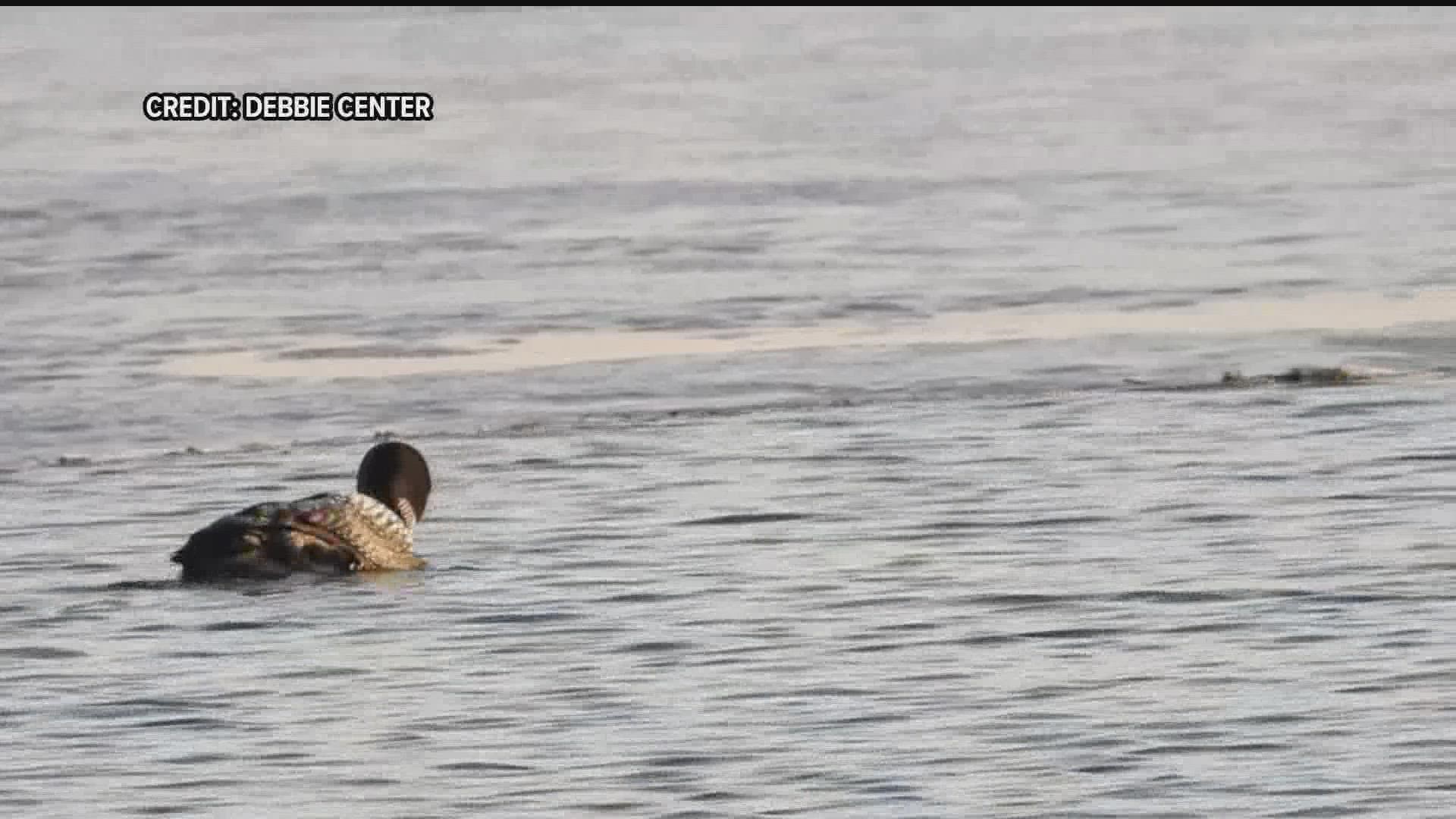CROSS LAKE, Minn. — A researcher trying to understand what’s causing a decline in Wisconsin’s loon population is expanding his project into Minnesota.
Minnesota Pubic Radio reported Wednesday that Walter Piper, a biology professor at Chapman University in California, has partnered with the National Loon Center to expand his research into Crow Wing County in north-central Minnesota.
Last summer Piper’s team attached identification bands to about 80 loons around the Whitefish Chain of Lakes north of Brainerd. The team plans to revisit those territories this summer to find out which birds survived.
Some loons on the chain were previously banded as part of study by the U.S. Geological Survey, which ran from 2015 to 2017.
“We're hoping to use our study population here in the Whitefish Chain and the surrounding lakes to get an understanding and sort of extrapolate to the larger population of loons in Minnesota,” Natasha Bartolotta, National Loon Center’s communications and outreach coordinator, told KARE 11 news partner MPR.
Piper has already determined that Wisconsin’s loon population has decreased by about 22% in the last 25 years. Chicks are smaller and young loons’ survival rate is lower.
“I worry that the same thing might be going on in Minnesota,” Piper said.
Piper theorizes that biting black flies may be driving loons off their nests, preventing loon pairs from incubating their eggs. He also believes loons are having a tougher time spotting food underwater because pollution is making lake water murkier.
Once the team has finished banding its study population, it will include about three percent of Minnesota’s total loon population, which stretches throughout much of the state, Piper said.
“This is just giving us one snapshot,” he told MPR. “But the comparison between Wisconsin and Minnesota is helpful, because it really does give us a sense of the regional population in the Upper Midwest and how it's doing. If both Wisconsin and Minnesota are declining, that suggests that we have a larger pattern than just a local problem.”
Watch more KARE in the Air:
Check out amazing drone video of Minnesota's most beautiful and iconic spots in our YouTube playlist:

